Brühwiler elevates production with complete Opti-Solution by System TM

Gyllsjö Träindustri Invests in Optimization:

Cutting Smarter, Growing Greener:
the Bar for Finger-Jointing:

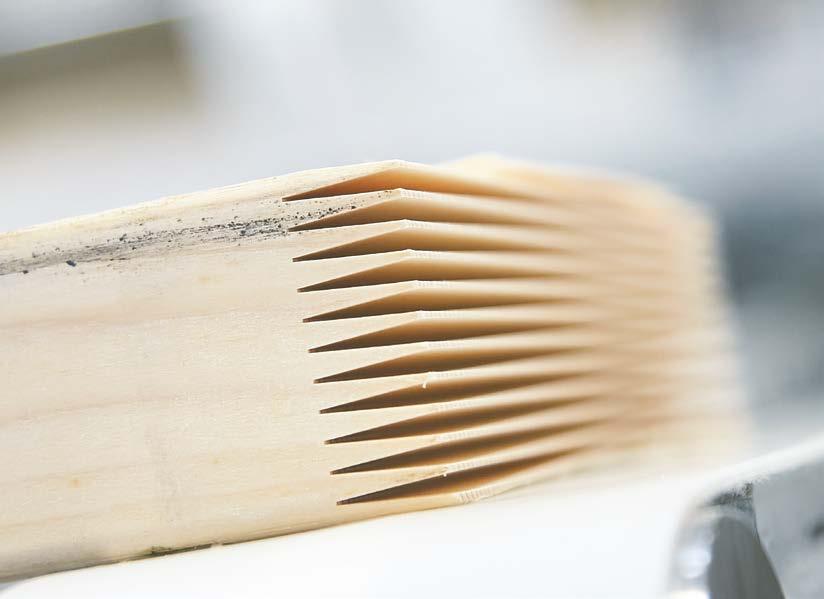

Brühwiler elevates production with complete Opti-Solution by System TM

Gyllsjö Träindustri Invests in Optimization:

Cutting Smarter, Growing Greener:
the Bar for Finger-Jointing:


From family roots to Nordic industry leadership, Gyllsjö’s latest addition of an intelligent System TM cross-cut line marks a strategic milestone – enhancing precision, boosting sustainability, and optimizing pallet production for the future.
By Aislinn Esterle
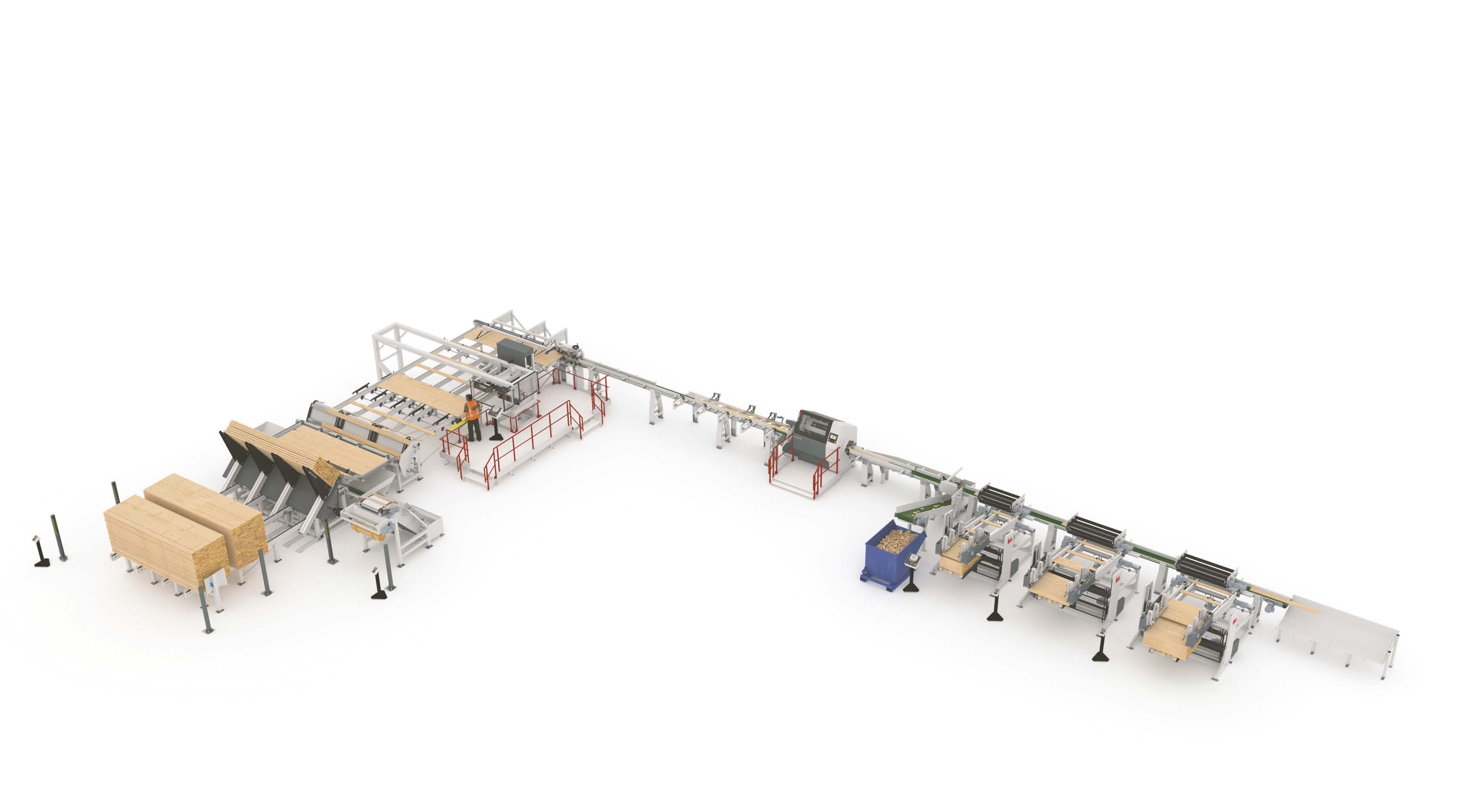
Founded in 1946, Gyllsjö Träindustri AB has grown from a small family-run business into a leading manufacturer of EUR pallets and custom-format wooden pallets. With nearly eight decades of experience, the company has built its reputation on long-term thinking, responsibility, and continuous innovation.
Investing in the future
Through continuous investment in machinery upgrades and production process refinement, Gyllsjö ensures the highest standards of durability, reliability, and cost-effectiveness for its products, both now and in the future.
The installation of a state-of-the-art cross-cut system by System TM – featuring an Opti-Kap 5103 cross-cut saw, an Opti-Feed 6000 feeding system, and three Opti-Stack 3000 stackers –supports this forward-thinking business strategy.
Bjørn Olsson Lissner, CEO, Gyllsjö:
“This is an important strategic investment for us with many advantages,” says Björn Olsson Lissner, CEO at Gyllsjö.
The new system optimizes the cutting pattern based on length and quality, resulting in considerable waste reduction, improved material utilization, and increased production efficiency.
"System TM's solution is a good complement to our current saw lines," explains Lissner, adding: "We can both run full-length boards from our saw lines and cut to size very efficiently, or source boards directly from the market. This increases our material utilization and makes us more flexible.”
Material input and preparation
"Over 90% of the incoming timber, primarily small-dimensioned, is sourced directly from Gyllsjö's own sawmill," explains Allan Them, System TM's Area Sales Manager. "These boards
‘‘ System TM has been a very good partner in the investment process, from planning to installation and now with the support afterwards. Everything has worked just according to our plans and we are very satisfied. ”
often have partially waned edges, which require precise optimization to be fully utilized – and that's exactly where System TM's technology makes a difference."
The line begins with a pack conveyor that can buffer two packs simultaneously. The timber is then transferred to the Opti-Feed 6000 tilt hoist, which includes automated stick removal. The tilt hoist feeds board layers to a receiving conveyor, elevator, and feeding conveyor. Removed sticks are collected in a custom rack located beneath the stick collector.
Optimizing every cut
The feeding conveyor is equipped with several features, including an integrated trim saw for preliminary board sizing, a wane scanner to detect waney edges, and a turning device to ensure the boards are correctly oriented prior to cutting. The system was designed and built with future upgrades in mind, including the integration of a multi-sensor scanner to enhance optimization.
Each board is fed individually into the Opti-Kap 5103 cross-cut saw, which uses data from the wane scanner in conjunction with optimization software to determine the most efficient cutting pattern.
Precise material flow
The output from the Opti-Kap 5103 is directed to sorting belts where boards are automatically classified into four categories: usable pieces for stacking, short waste removed by the saw, long waste ejected by the first kicker, and unsorted or


rejected boards that are sent to a slide at the end of the belt. Two dedicated waste belts efficiently transport all waste to a centralized container, ensuring clean, streamlined operations.
Flexible, automated stacking
Three Opti-Stack 3000 units handle the stacking of fixed-length boards with sticks or brick/zigzag stacking. Pallets are manually supplied to the stacking stations, allowing for flexibility in pack formation.
At the end of the sorting process, a slide collects any additional fixed-length boards or rejected pieces, maintaining a continuous production flow.
Built on innovation
Gyllsjö is a leading innovator in sustainable packaging, setting industry standards through innovation and assuming responsibility. From pioneering in-house nail production to becoming the first Nordic company to manufacture chipboard blocks from recycled pallets, Gyllsjö continues to lead with purpose.
Its fully integrated production process, which includes sawmilling, nail manufacturing, automated pallet assembly, recycling, and logistics, creates a closed-loop system that maximizes resource efficiency and minimizes environmental impact. This unique setup boosts operational performance and reinforces Gyllsjö’s commitment to sustainability.
System TM's Swedish sales agent, L.O.A.B., provided regional support as part of our ongoing commitment to providing excellent customer service across the Swedish market.
“We’re proud to count Gyllsjö among our customers and to support their ongoing growth and journey toward smarter, more sustainable production,” says Them. “This installation reflects our shared commitment to delivering highperformance solutions tailored to the needs of Nordic manufacturers.”
Data for the line: This System TM solution consists of the following:
Production: Pallet & container
Wood species: Softwood
Number of operators:
Country: Sweden
By implementing a new optimizing cross-cutting solution, the Brazilian wood manufacturer has increased its yield, minimized waste, and strengthened its commitment to responsible forestry and a safer workplace.
By Aislinn Esterle

Madeiras Salamoni LTDA was founded in 1944 by José Antonio Salamoni in Caçador, Santa Catarina, Brazil. Starting as a labor-intensive sawmill, the company remains family-owned to this day.
From local roots to global reach
Over the decades, Salamoni has evolved through innovation and resilience, transitioning from waterpower to steam and, eventually, to state-of-the-art machinery. Today they operate over 10,000 m² of facilities dedicated to sawmilling, drying, and wood processing. With more than 80 years of experience, the company produces Brazilian wood products for international markets and specializes in mouldings and millwork.
Precision meets Performance
At System TM, innovation and efficiency go hand in hand – and Madeiras Salamoni’s latest cross-cut line is a prime example. This advanced solution combines MiCROTEC scanning technology with System TM’s optimization expertise to deliver high-speed precision and smarter resource utilization.
As System TM’s trusted dealer in South America, Grupo Linares played a key role in guiding Madeiras Salamoni through the selection and implementation process. “At Grupo Linares, we’re proud to represent System TM and bring world-class optimization technology to forward-thinking manufacturers like Madeiras Salamoni,” says Gonzalo Linares, Director at Grupo Linares. “This project is a testament to how strong partnerships and smart investments can drive sustainable growth and operational excellence across the wood industry.” Together, System TM and Grupo Linares helped tailor a solution that aligns with Salamoni’s production goals and sustainability values,
reinforcing a shared commitment to innovation, efficiency, and responsible forestry.
Optimized for performance
This solution features two Opti-Kap 5103 cross-cut saws arranged in a Y-configuration to maximize throughput and material utilization. First, workpieces are transported via a feeding chain conveyor to a MiCROTEC Goldeneye scanner, where they are analyzed to determine the optimal cut pattern. Depending on capacity, pieces are fed into the scanner at a precisely coordinated speeds to ensure seamless alignment of all elements in the line.
After scanning, the workpieces are swept transversely onto saw distribution conveyors that feed into the two Opti-Kap 5103 optimizing cross-cut saws. Each saw is followed by a sorting belt conveyor with pneumatic kickers that efficiently separate long waste, finger joint blocks, and cut stock.
“The Y-configuration of two Opti-Kap saws, combined with MiCROTEC scanning ensures high-speed precision. It’s a setup designed for performance and long-term reliability, enhancing productivity and supporting smarter resource management by optimizing staff and wood resources,” explains Rasmus Nissen Baastrup, Area Sales Manager for South America at System TM.
Investing in technology and sustainability
Recognizing the importance of sustainability early on, Madeiras Salamoni was one of the first companies in the region to take responsibility by shifting from exploiting native forests to reforesting pine, which plays the central role in their production today. This approach ensures the company's long-term viability and demonstrates its environmental responsibility and dedication to responsible forestry.
Madeiras Salamoni's strategic machine upgrades reinforce their commitment to continuous improvement and long-term growth.
Madeiras Salamoni continues to evolve by embracing advanced wood processing technologies that focus on efficiency, safety, and environmental responsibility. The company regularly upgrades its equipment to increase productivity and ensure safer working conditions for its employees. “The new System TM cross-cut line allows us to get the most out of every workpiece. It’s not just about productivity, it’s about doing things smarter and more sustainably,” says Moacir José Salamoni, Managing Director at Madeiras Salamoni.
Implementing advanced solutions, like their new cross-cutting Opti-Solution, optimizes raw material usage, significantly reducing waste and promoting sustainable forestry practices. These innovations improve operational results and create a safe working environment, reflecting the company’s commitment to people and the planet.
Smart investment, strong results
Implementing System TM’s cross-cutting solution has measurably improved Madeiras Salamoni’s operations. By integrating advanced scanning and optimization technology, the company has increased production efficiency and minimized waste.
“This setup allows us to maximize the machines' capacity, leading to faster turnover. By maximizing the value of every workpiece, we anticipate a swift return on investment,” states Salamoni.
Data for the line:
Number of operators:
Country: Brazil
This System TM solution consists of the following:
A MiCROTEC GOLDENEYE SCANNER
Detection of defects and quality before cross-cutting B OPTI-KAP 5103
Optimizing cross-cut saw C SORTING BELTS
‘‘ The new System TM cross-cut line allows us to get the most out of every workpiece. It’s not just about productivity – it’s about doing things smarter and more sustainably. ”

The Swiss family-owned sawmill secures future-ready window scantling production with seamless optimization and high performance by upgrading to a full cross-cut and finger-jointing solution.
By Aislinn Esterle
Founded on strong family values and deep regional roots, Brühwiler Sägewerk AG processes around 17,000 cubic meters of local softwood annually. Guided by the motto “From tree to building,” the company transforms logs into finished products, focusing on sustainability and local sourcing – a philosophy closely aligned with System TM's approach to resource efficiency.
One solution from one provider
Brühwiler’s journey toward a brand-new Opti-Solution began at LIGNA 2019, where initial discussions focused on replacing an outdated finger-jointing line. However, as the project evolved, shaped by changing needs and unforeseen circumstances, it grew into something much more ambitious. What started as a plan to modernize a single line became a fullscale production upgrade.
Today, Brühwiler operates a fully integrated system designed, built, and installed by System TM, featuring advanced scanning technology supplied by our trusted partner, MiCROTEC. The Opti-Solution includes an optimizing cross-cut line equipped with an Opti-Kap 3103 cross-cut saw and an Opti-Joint V-8 vertical finger-jointing line, seamlessly connected to scanning, sorting, and stacking systems.
This “one solution from one provider” approach ensured seamless integration, simplified coordination, and optimal performance across every stage of production.
Smart use of space
A key factor in System TM securing the order was our ability to design a compact, spaceefficient solution tailored to Brühwiler’s newly renovated production hall. The layout fits seamlessly within the available footprint while maximizing workflow and material utilization. This reflects not only technical ingenuity but also System TM’s commitment to understanding and accommodating each customer’s unique needs. At System TM, we place high value on close cooperation and thorough evaluation of every project’s specific context-whether it’s production goals, available space, labor conditions, or longterm growth plans. This collaborative approach ensures that every solution is not only technically
advanced but also perfectly aligned with the customer’s operational reality.
"We couldn't expand our production hall, but we wanted to produce significantly more with the new machine. System TM made this possible by precisely adapting the machine layout to our hall. It has proven itself very successful ever since," explains Yvonne Kappeler, Project Manager at Brühwiler.
Smart scanning for quality and yield
The production starts with the cross-cut line, where timber packs are placed on a conveyor chain and moved to the Opti-Stack 6000 Vack vacuum infeed-system, which was intelligently adjusted and adapted to fit the specific space requirements. It lifts each layer of boards, which are then separated and individually scanned by a MiCROTEC Goldeneye multi-sensor quality scanner to determine the optimal cutting pattern. This ensures that exacting standards are met and that only the highest quality wood is used for window scantlings. Defects, such as knots or resin pockets, are removed and shorter pieces are sorted for finger-jointing. This scanning and sorting process is essential for consistently producing uniform workpieces and minimizing waste.
Precision cutting and efficient sorting
The boards are then transferred to the Opti-Kap 3103 cross-cut saw, where they are precisely trimmed. After cutting, the timber is automatically sorted into long waste pieces or finger-jointing pieces. Long workpieces are directed to a manual stacking area, while finger-jointing pieces are separated by two scrapers. They can be stacked temporarily, which allows pieces of varying quality to be reintroduced into the line later by an Opti-Feed 3000 Vack back-feeding system. Alternatively, they can be sent directly to the batch builder of the finger-jointing machine. This flexible stacking routine ensures efficient handling, maximizes material utilization, and supports Brühwiler’s commitment to producing premium scantlings for window manufacturing.
The power of finger-jointed scantlings Scantlings-precision-engineered, timber sections
– form the backbone of high-quality window frames. At Brühwiler, the integration of System TM’s finger-jointing line sets a new benchmark for customer-oriented production and resource efficiency.
Once sorted, short, defect-free timber segments are collected into batches and processed through two finger-joint shaper stations, where precise finger profiles are milled. Adhesive is applied before the segments enter the press, which produces finished scantlings of up to 6,100 mm in length. This pressing process ensures outstanding structural integrity and dimensional stability – essential qualities for durable window frames.
Finished pieces are automatically lifted and transferred to a drying tower, then delivered to the Opti-Stack 9000 with an automated package outfeed system. By turning short timber pieces into long, stable scantlings, Brühwiler makes efficient use of every board while consistently meeting the high standards of Swiss window manufacturing. From scanning to stacking, every step is designed to optimize resource use and ensure consistent, high-quality output.
A family-oriented partnership
Throughout the collaboration, Brühwiler’s identity as a family-owned and family-oriented company was evident. Their values of trust, quality, and long-term thinking align perfectly with System TM’s approach to customer relationships and project execution.
“Working with Brühwiler has been a pleasure from start to finish,” says Per Juul Jensen, Area Sales Manager at System TM. "Their commitment to quality and openness throughout the process enabled us to deliver a solution that truly fits their needs. It’s a great example of what can be achieved through close cooperation and shared values.”
Strengthening Swiss window production
By combining tradition with cutting-edge technology, Brühwiler is reinforcing its role in the Swiss timber industry. The new Opti-Solution efficiently uses every piece of regional wood, transforming it into robust, high-performance components and laying the foundation for
sustainable, premium window production in Switzerland.
"Our entire project team traveled to Denmark for the factory acceptance test. We met all the relevant people and were able to discuss and clarify numerous details on-site. On the way back, we knew: 'This will be a success.' This feeling was confirmed,” recalls Benno Müller, Head of Plant Engineering at Brühwiler.
Brühwiler’s team joined System TM in Denmark for the Factory Acceptance Test (FAT), where direct discussions helped clarify key details and build strong confidence in the project’s success.


Data for the line:
Production: Sawmill
Wood species: Softwood
Number of operators:
Country: Switzerland

This System TM solution consists of the following:
A OPTI-FEED 6000 VACK
Automatic feeding system
B MiCROTEC GOLDENEYE SCANNER
Detection of defects and quality before cross-cutting
C OPTI-KAP 3103
Optimizing cross-cut saw
D OPTI-FEED 3000 VACK
Automatic feeding system
E OPTI-JOINT V-8 Vertical finger-jointer
F PRESS UNIT
G DRYING TOWER
H OPTI-STACK 9000
Automated stacking systems
Maria Brühwiler, Owner, Brühwiler Sägewerk:
‘‘ When it became clear that we needed to replace the entire system – which significantly increased the size of the project – we immediately felt comfortable with System TM. We sensed their extensive experience in this field. They always had a solution for our requirements. ”

A leading hardwood producer is boosting processing performance with a new Opti-Solution. The solution, featuring an Opti-Kap-5103 and automated scanning and stacking, reduces waste and optimizes production.
By Aislinn Esterle

The producer has evolved from a traditional local operation into a modern manufacturer known for high-quality hardwood products. Located near the abundant beech forests of the Alsace-Lorraine region, the company is strongly committed to sustainability. The recent installation of a state-of-the-art optimizing crosscut line has increased production precision and efficiency even more, ensuring the responsible use of every part of the timber.
New line for excellence
The newly implemented Opti-Solution from System TM marks an important advancement for the company’s hardwood processing capabilities. This integrated system combines an OSI planer, MiCROTEC Woodeye scanner, Opti-Kap 5103 cross-cut saw, and four Opti-Stack 3000 units to automate critical steps and optimize material flow from raw timber to finished product. This automation enables the producer to meet growing market demands more quickly and accurately, while adhering to sustainable production principles.
Optimizing every piece
The process begins with workpieces arriving at high speed from the ripsaw of the existing production line and being transferred directly to the new system. The material is then sorted by width: Wider workpieces continue through the existing processing line, while narrower ones are removed manually and redirected via a “spider conveyor” for further optimization.
An operator can trim workpieces with spear ends and split those with excessive side bow to ensure optimal presentation before the OSI planer and MiCROTEC scanner.
Before reaching the planer, workpieces are buffered in batches. A roller system with top-pressure wheels then feeds them into the planer. Frequency-controlled conveyors allow for adjustable feed speeds to accommodate production needs.
Smart scanning and precise cutting
After planing, workpieces are buffered until ready for scanning. They are accelerated longitudinally to create gaps for accurate evaluation by the
MiCROTEC Woodeye scanner. The scanner assesses each piece’s quality and optimizes cutting based on predefined parameters and defect detection.
Following scanning, workpieces are accelerated toward an end-stop and pushed onto a buffer conveyor leading to the Opti-Kap 5103 saw. The saw executes precise cuts according to the scanner’s optimization data. Waste is automatically removed within the saw unit and transported via a waste belt to the existing waste management system on site.
Efficiency from start to finish
After cutting, the workpieces move to a sorting belt where they are directed either to one of four Opti-Stack 3000 machines for automated stacking or to a final sorting area. Shorter pieces (up to 1,200 mm) follow a separate path with a 90-degree turn to a manual sorting table, where operators pull and stack them.
This streamlined workflow supports a diverse product range, including sawn timber, packaging wood, pallet boards, and custom-sized
components, including some very long components tailored to customer needs.
Tradition driving innovation
Investing in advanced technology is a key approach to improving efficiency and product quality in hardwood processing. By respecting the natural characteristics of wood and combining traditional craftsmanship with modern automation, producers can achieve sustainable and high-quality results. The integration of innovative equipment, such as optimizing cross-cutting systems and state-of-the-art scanning equipment, reflects a forward-looking mindset that embraces progress while honoring the industry’s long-standing heritage.
Fabien Iffrig, Eurotecpro SLU, System TM's French sales partner:
‘‘ This project is a perfect example of how smart automation can boost traditional timber processing," says Fabien Iffrig of Eurotecpro SLU, System TM’s French sales partner. "By integrating System TM and MiCROTEC technologies, our customer now has a future-ready solution that maximizes yield and maintains top-tier quality.

The Uruguayan sawmill strengthens its commitment to automation, precision, and sustainability with System TM’s fastest finger-jointing solution to date—boosting yield, reducing labor dependency, and raising the bar for highefficiency production.
By Aislinn Esterle
In a continued effort to modernize its production and enhance efficiency, DANK S.A. has invested in the first-ever Opti-Joint H-220 horizontal finger-jointing line from System TM. The project was completed in close collaboration with Grupo Linares, System TM’s trusted South American sales partner, marking a significant milestone in DANK’s journey toward high-speed, high-yield automation.
A legacy of innovation
Established in 1987, DANK has long been a pioneer in Uruguay’s timber processing industry.
As part of the FYMNSA group – a family-owned pine plantation founded in 1974 – DANK processes FSC-certified plantation pine from the Rivera district, known for its deep, sandy soils and sustainable forestry practices.
Since 2014, DANK has made a series of strategic investments in System TM machinery to address labor shortages and a need to improve consistency and increase yield. Starting with an Opti-Kap 5003 cross-cut line to reduce labor dependency, followed by multiple upgrades and including the recently installed Opti-Joint H-220 line – System TM’s fastest finger-jointing solution to date – delivering up to 220 workpieces or 80 meters per minute.
“DANK has consistently shown a forward-thinking approach to production, and their investment in the Opti-Joint H-220 is a natural next step,” says Rasmus Nissen Baastrup, Area Sales Manager at System TM. “Working closely with Grupo Linares, we were able to deliver a solution that not only meets DANK’s technical requirements and supports their long-term production goals.”
From block to profile
This Opti-Joint H-220 finger-jointing line features fully automated feeding and stacking, designed to streamline the entire finger-jointing process. It begins with an automatic infeed, where finger-jointing blocks are fed into a spin-feeder and transferred to a lug-loader. This loader ensures single-piece feeding into the lug-chain of the finger-jointing machine, maintaining a smooth and controlled flow.

using luminescent additives in the adhesive, ensuring consistent bonding quality.
From press to pack
After applying glue, the blocks are aligned in a pre-alignment station and transferred to the pre-press and press station to become fixedlength, finger-jointed workpieces. These are then processed by two split saws, which are automatically adjustable from the operator panel to achieve precise cutting lengths. Operators can inspect and reject pieces after pressing if needed. The final step is handled by the Opti-Stack 6000, which automatically stacks the finished workpieces, streamlining the output process, reducing manual handling, and ensuring a clean and efficient end to the finger-jointing process.
A strategic step forward
Before entering the shapers, each block passes a laser sensor that measures the squareness of its ends. This data is then used to position each block precisely, minimizing the amount of material removed during the shaping process. The blocks then proceed through two shaping stations, where the finger profile is created. Glue is applied to one side via a glue applicator, followed by a glue control system that verifies application
This System TM solution consists of the following:
A OPTI-FEED SPIN-FEEDER
Automatic workpiece alignment
B OPTI-JOINT
This investment reflects DANK’s long-standing commitment to automation and optimization. In recent years, the company has faced common challenges in the South American manufacturing sector, such as rising labor costs and a shortage of skilled workers. By investing in advanced machinery from System TM, DANK has reduced its reliance on manual labor while improving production consistency and yield.
Data for the line:
Production: Moulding & millwork
Wood species: Softwood
Number of operators:
Country: Uruguay
“This new line allows us to get more out of every piece of wood, while improving consistency and reducing manual handling,” says Gustavo Balerio, Director of DANK S.A. “It’s a smart investment that strengthens our commitment to quality and sustainability.”
A key partner in South America
The successful delivery and installation of the Opti-Joint H-220 line was made possible thanks to the close collaboration with Grupo Linares, System TM's dealer in South America. Their local expertise and hands-on support were essential in tailoring solutions to DANK’s specific needs.
"We're proud to support DANK on their journey toward smarter, more sustainable production," said Gonzalo Linares, Director at Grupo Linares.
"This installation reflects our shared commitment to providing high-performance, tailored solutions to South American manufacturers."
Looking ahead
With the Opti-Joint H-220 now up and running, DANK continues to lead the way in sustainable, high-efficiency timber processing. The company’s vertically integrated model – from FSC-certified plantations to finished products – ensures maximum resource utilization and minimal environmental impact. This strategic investment solidifies DANK’s standing as a forward-thinking manufacturer dedicated to innovation and longterm growth.
"DANK is well-positioned to meet future demands with greater speed, consistency, and resource efficiency," says Baastrup. "This project reflects what’s possible when innovation, partnership, and long-term vision come together – and we’re proud to be part of that journey."
Finger-jointed wood, showcasing the precision and efficiency of modern timber processing, is ideal for maximizing material use and structural integrity.

‘‘
of wood. ”

Thank you to everyone who visited us at LIGNA 2025 in Hall 14, the new hotspot for solid wood processing and timber construction. Your visit helped make this year's event truly unforgettable.

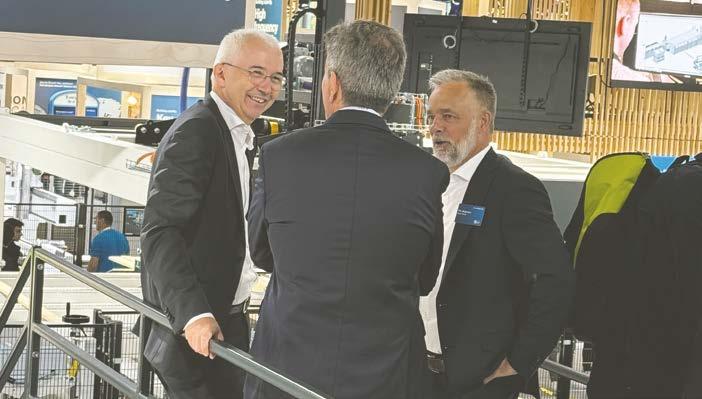
A new Chapter Begins!
LIGNA 2025 marked a significant milestone for System TM. For the first time, we joined forces with HOMAG, WEINMANN, and KALLESØE under one roof, officially becoming part of the HOMAG Group. After two decades in Halls 12 and 27, moving to Hall 14 symbolized more than a change in location; it represented a bold step into a unified future for solid wood processing and timber construction.
Technology on Display
We were proud to present two of our advanced Opti-Solutions featuring state-of-the-art scanning technology from our partner, MiCROTEC. We have waited six years to showcase a

fully automated solution of this kind again at LIGNA, and we took the opportunity to unveil our new machine design.
Building Living Spaces — Together
Under the shared theme "Building Living Spaces," HOMAG showcased its entire portfolio in one place for the first time in LIGNA's 50-year history. Together, we demonstrated how our combined expertise spans the entire value chain – from raw timber to finished building elements and furniture – with unique, seamlessly compatible system solutions.
Looking Ahead
We hope you found the experience inspiring and insightful. The conversations we had and the connections we made are paving the way for exciting opportunities ahead. If you’d like to continue the dialogue, explore specific solutions, or receive more information, we’d love to hear from you.
We look forward to seeing you at LIGNA 2027 – make sure to stay connected to receive updates.
is a specialist in highly advanced timber processing systems, including finger-jointing lines and cross-cut saw technology.


is an expert in GLT/CLT production and high-frequency technology for rapid glulam curing.
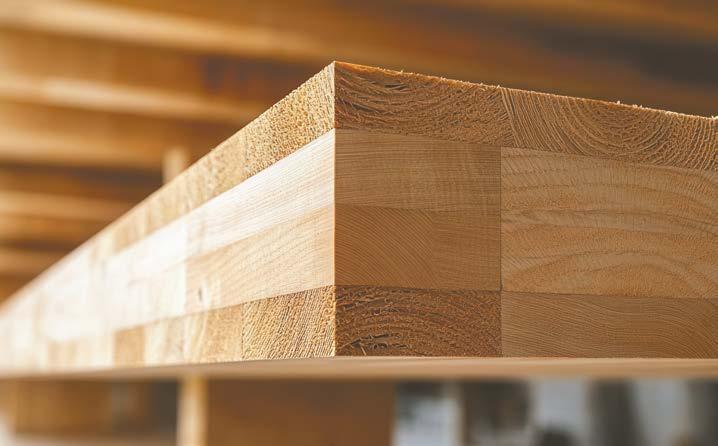

is the world’s leading equipment manufacturer for off-site construction with just-in-time solutions on all scales - from single machines to fully automated production systems.
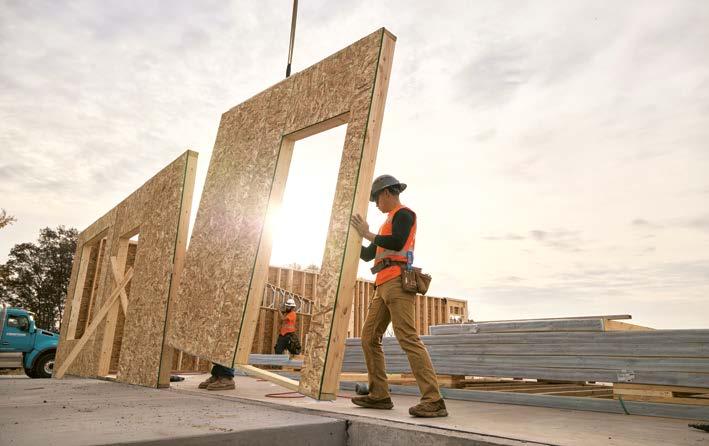

is a global frontrunner in woodworking machinery for furniture production and serves businesses of all sizes.
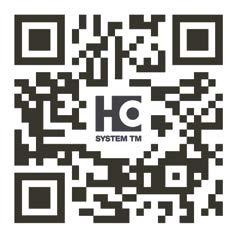
Read more on our website systemtm.com Or scan the QR code

